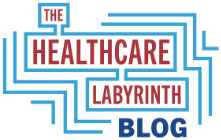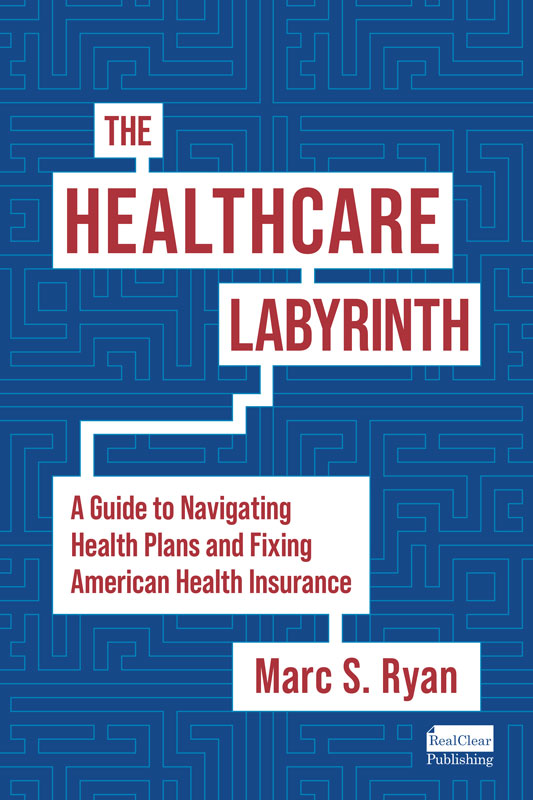(NOTE: Updated for AstraZeneca deal on 10/10/2025 and EMD Serono deal on 10/16.)
Has Big Pharma hoodwinked the president and his advisors?
As readers of this site know, I am a Republican but a big believer in drug price reform. Traditionally Republicans have curried favor with Big Brand Pharma – I say the GOP has been in brand drug makers’ hip pockets for years. Most GOP lawmakers shout from the rooftops that free market innovation will be stifled, disease will go untreated, and death will proliferate with drug price reform. Of course, the sensational arguments are taken directly from Big Pharma talking points. The drug market is not a free market and there are great examples of Republicans like Teddy Roosevelt standing up to cartels, monopolies, and oligopolies. Is there any doubt Big Pharma constitutes one of these anti-free-market entities?
While I have some concerns about drug price reforms’ impacts, thoughtful strategies can overcome any of those negatives. A few responses can be fairer prices abroad, more government research dollars, international collaborations, and comprehensive patent and innovation reform (including value- or outcome-based reimbursement). What’s more, a case can be made that if there is some innovation fallout, we can tolerate that because Americans would see profound benefits coming from lower prices. Better affordability leads to greater medication compliance. This helps control disease states and conditions. Right now, too many are being forced to buy their drugs from Canada (if they can get consistent supply,) going without meds, or splitting pills. It is a national tragedy.
That’s why I have applauded President Trump’s stand on drug price reform, even as I criticize other aspects of his healthcare policy. And this time, he appears to be drawing more support from his own party – some enthusiastic and some grudging.
Trump had some of the same policy back in Trump 45 but unfortunately equivocated along the way. Consequently, little was accomplished. He now seems much more focused on wanting drug price reform this time around in Trump 47. The problem, though, is following the messy policy process surrounding his new-found desire to finally make headway on drug prices.
Here is a brief snapshot of the progress so far:
- After Trump retook office, the Centers for Medicare and Medicaid Services (CMS) issued a statement indicating it was readying and taking seriously round two of Medicare drug price negotiations enacted under the Biden administration, although it wanted greater transparency and input. Prices are due out later this year for 2027 for 15 drugs.
- In our first inkling of where he stood on drug prices and reform as Trump 47, on Super Bowl Sunday Trump appeared on Fox News bemoaning the price of GLP-1s. He even quoted statistics that GLP-1s in America were ten times more than prices in the U.K.
- In an initial executive order, the president showed a sophisticated and nuanced approach to reforming the opaqueness of the drug channel and other aspects of price-setting in our nation, including importation, biosimilar and generic uptake, site neutral payments, reforming acquisition costs and charges by hospitals and other entities, a new payment model, and changing the current Part D drug negotiation law.
- In a second executive order, the president indicated a desire to implement most-favored nation (MFN) pricing, the strictest form of international reference pricing, across all lines of business. America would adopt the lowest price agreed to in any other developed country. This would result if brand drug makers did not come back with significant price concessions in the meantime. On September 25, the proposed rule for the “Global Benchmark for Efficient Drug Pricing (GLOBE) Model” (RIN: 0938-AV66) was sent by the Department of Health and Human Services (HHS) to the White House’s Office of Management and Budget (OMB) for regulatory review. This appears to be implementing MFN. The rule also rescinds a Trump 45 MFN model for Part B medical drugs.
- CMS Administrator Dr. Mehmet Oz said he wants pharmacy benefits managers (PBMs) to end the complicated system of drug rebates, or the government will step in to change it. Oz said regulators and lawmakers could revamp the system “fairly expeditiously” because there is widespread support. Under Trump 45, the administration did propose to eliminate the safe harbor that allows the paying of rebates in Medicare.
- CMS Administrator Dr. Mehmet Oz hinted that the Trump administration could issue a rule that is focused on drug price transparency. This could be part of the administration’s overall drug price reform initiative. The rule might require health plans and pharmacy benefit managers (PBMs) to disclose any rebate amounts and the net prices of drugs.
- At various points, Trump has announced his intention to impose tariffs. There were general pronouncements that he wanted tariffs on both brand and generic drugs (ranging to as much as 250%). He next announced a commerce investigation that could lead to the imposition of tariffs on brand drugs. After the conclusion of the investigatory period, he announced 100% tariffs on brand drugs effective October 1 unless manufacturers were making investments in U.S. production. He forestalled the tariffs a short time later after arriving at one major price concession deal with a brand company. The tariffs of course are a bad idea and would increase healthcare costs dramatically, but they are part of his overall effort to shake up the systems and redefine drug prices.
- Trump arrived at a concession deal with brand maker Pfizer. Pfizer agreed to provide all of its prescription drugs in the Medicaid program only at Trump’s desired most-favored-nation (MFN) drug pricing. Pfizer also agreed to offer many of its drugs at a significant discount direct to consumer. Savings will be as high as 85% and be about 50% on average against the current list price. The administration indicates other deals are in the works and some could come this week or next. In return, Pfizer said it will be given a three-year “grace period” from tariffs.
- A second brand drug maker struck a concession deal as well and it looks a great deal like the Pfizer one. AstraZeneca will provide all drugs in Medicaid at most-favored-nation pricing. AstraZeneca also will offer medicines at a deep discount off the list price when selling directly to American patients. The deal will exempt AstraZeneca from the 100% tariffs the Trump administration wants to impose on brand drugs.
- Three additional items in both deals above: (1) MFN would apply to future innovator drugs introduced; (2) Repatriation of increased foreign revenue on existing products for development here; and (3) Various investments in U.S. manufacturing and research and development. It is unclear if the MFN provisions on future drugs are truly across all lines of business or just on Medicaid and self-pay discounts. Will rebates be eliminated and are we dealing just with net prices at MFN levels on drugs regardless of payer? Will companies be barred from obfuscating real prices in other countries by entering into backroom deals with countries where higher prices are set and a hidden rebate or discount given? What of necessary relief from high innovator prices in the bulk of the drug market on existing innovator drugs?
- A third deal focuses on fertility drugs for in vitro fertilization (IVF). EMD Serono will significantly reduce the cost of certain IVF medications and will receive tariff protection in exchange for investing in U.S. manufacturing.
- The White House also announced it was rolling out a direct-to-consumer website with medications at discounted prices. The new website of course is called TrumpRx and appears to be a clearinghouse for direct-to-consumer pricing potentially by numerous brand drug makers, including the deals above.
As I said earlier, I have liked Trump’s stand here and the seeming progress. Although messy, he is getting the attention of intractable Big Pharma, which previously has pretty much stonewalled and stymied reform as it “waited out” administrations. The only noticeable recent reform on drug price was Medicare drug price negotiations in the 2022 Inflation Reduction Act, which passed on a strictly partisan vote during the Biden administration. I backed that reform as at least something that would begin to move the drug-price needle. But the negotiations so far (2024 negotiations resulted in 10 drug prices for 2026; 2025 negotiations for 15 drugs in 2027 are ongoing) resulted in an average reduced net price of 22%. That is paltry given Americans pays manyfold more for drugs than citizens in other developed countries. The small savings in year one is perhaps understandable, but the arcane and labyrinthine process will mean Americans wait years for true relief. I would say, however, I am very supportive of the annual inflation caps and mandatory additional rebates or penalties if drug makers violate the cap. This has given immediate relief across the board in Medicare.
Despite the momentum we have seen this year on drug price reform, I worry Trump could “short circuit” the progress because of the brand drug maker deals he has or will make. When Big Pharma comes with open pockets, I tend to view it more as gimmicky self-preservation.
Take the Pfizer deal: it does not appear to offer material price concessions to most Americans — at least right now. How much is truly saved by consumers, and the system as a whole, is an open question. It does not appear to fundamentally change price in the system — anytime soon if ever.
Let’s dive deep into what we know about the deal. Medicaid prices are already deeply discounted through a rebate program given the program’s safety net status. According to the latest data from MACPAC, the congressional Medicaid policy arm, federal rebates, supplemental state rebates, and additional inflation ceiling rebates mean that total concessions from list price now are just over 68% and growing. Thus, the additional money Pfizer needs to put on the table is small given the big rebates in Medicaid already and the fact that the big spend is in Medicare and the employer/commercial world (not Medicaid).
Most of the rest of the Pfizer deal is limited to direct-to-consumer, self-pay discounts. The discounts would mean net prices that appear to be on average more than what net pricing is after drug rebates to PBMs today. But in truth, Pfizer is conceding little to nothing here as well. It is easy for Pfizer to concede an average of 50% from list price for the self-pay discount as most of these self-pay folks largely could not afford the drugs before. Now, more sales could occur to these self-pay folks and the revenue derived becomes incremental “gravy” for the manufacturer. This is similar to how the drug makers look at revenue from other developed countries that have extremely low prices compared with America.
As well, a quick look at the Pfizer drug list points to a few other facts: the drugs are prohibitively expensive (even with the proposed discounts), they don’t seem to be highly used in America, and the drugs are close to patent expiration and generic competition. It seems the actuaries at Pfizer ran some spreadsheets to find the combinations of drugs where concessions looked good but did not materially impact Pfizer.
Quite simply, the deal does not seem to offer broad relief or make solid commitments to concessions in Medicare Part B or D or how employer and commercial drug pricing works. This is where the big money is: Medicare has high utilizers and employer/commercial has big insured numbers. Here the old “list-price-minus-rebate” system will continue. Brand manufacturers offer PBMs rebates for favorable status on formularies and to block the sales of competitors with similar drugs. Not all rebates are passed through to health plans in Medicare or to employers/plans in the commercial world. But even when they are, little to none of the dollars are used to offset the high price of these brand drugs at the point of sale. So, consumers are paying high cost-sharing under the rebate-driven system. And the rebate system perpetuates higher and higher prices as manufacturers increase list prices every year in order to pay the rebates to PBMs to get the right formulary placement compared with competitors.
So, the Medicaid and self-pay concessions do little to nothing to truly reform drug prices unless the provisions regarding MFN on future drugs is broader than Medicaid and self-pay (and they don’t tackle existing innovator drugs). In fact, Pfizer’s concessions could be strategic givebacks to insulate it from true transparency and price reform. Big Pharma benefits considerably from high price in America generally and the “list-price-minus-rebate” system specifically. The evidence is the highest percentage margins in all of healthcare.
One last point: while I supported the Biden Medicare drug negotiation plan, I was underwhelmed by the net savings of just 22%. Rebates can vary dramatically across manufacturer and drug class. But most studies suggest that Medicare Part D brand rebates are 28% to 30% and employer/commercial rebates are 25% to 30%. If the ten drugs in Part D will be lower on a net basis by about 22%, that means a 50% effective average rebate so to speak. In effect, Pfizer’s self-pay price concession on what a small subset of consumers would pay for their drugs mimics the rather paltry concession obtained through Medicare drug price negotiations so far. But here is the problem: the Biden program definitively (if slowly) actually begins to reform drug price in one of the biggest spending areas, Medicare. Trump’s Pfizer deal does not clearly do that — at least for some time. In the end, this is typical Big Pharma strategy — offer something that looks good but to continue to obfuscate.
So, I have to ask again: is Big Pharma hoodwinking Trump and his policy advisors?
Again, I cannot say it enough — I am with Trump and what he is trying to do. I also have made the case that Trump’s orders and series of proposals and threats might be labeled extortion. But in this case, I am OK with that if we want real concessions. Is there any doubt that brand drug makers have been extorting the American people for decades.
But Trump and his advisors need to look closely at what the deals really do for drug price in America. They should stick to their guns by demanding the elimination of opaque rebates and fighting for fundamental price reform throughout the system. The deals mention MFN parity on future drug introductions. But if concessions are not real and there is insufficient relief now, MFN and other sweeping price reforms should be implemented across Medicare and employer/commercial coverage. And shouldn’t Americans have the certainty of lower prices in law and regulation rather than softer commitments from drug makers that could be undone in the future?
The big question right now is will Trump actually announce MFN across all lines of business despite these brand drug maker concession deals. The pill-splitting, the fear of approaching the pharmacy counter, the emergency room visits, and the premature death and morbidity need to end. So does Big Pharma’s laughing all the way to the bank.
#drugpricing #branddrugmakers #irp #mfn
— Marc S. Ryan





